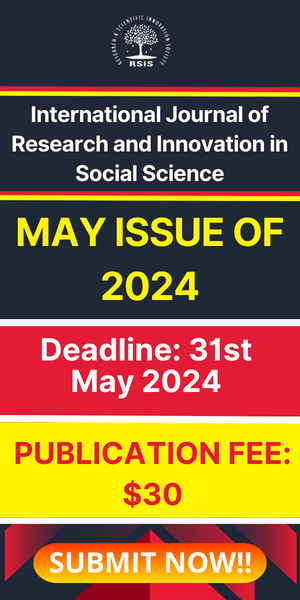- July 13, 2023
- Posted by: rsispostadmin
- Categories: IJRIAS, Physics
Textural and Depositional Environment Analyses of Maastrichtian Ajali Sandstone Outcrops at Igbere-Abiriba Area Afikpo Basin South Eastern Nigeria
*Ogbonna T.L1, Ikoro D.O2, Agbodike I.C1, Chineke T.C1, Nwugo C.J1
1Department of Physics, Imo State University Owerri, Nigeria
2Department of Geology, Federal University of Technology Owerri, Nigeria
*Corresponding author
DOI: https://doi.org/10.51584/IJRIAS.2023.8617
Received: 29 May 2023; Revised: 13 June 2023; Accepted: 20 June 2023; Published: 13 July 2023
Abstract: The study presents the Textural characteristics of the Ajali sandstone at Igbere-Abiriba area in Afikpo basin, southeastern Nigeria. The intent is to highlight possible constraints of the environment of deposition of the source material on one hand and to infer the provenance on the other hand. The investigation approach includes field studies involving grain size analysis. Field studies shows that the Ajali Sandstone is friable at all location and range in colour from white in freshly cut stone, to reddish brown on weathering. In addition, the Ajali Sandstone units are cross-bedded and show graded bedding, exemplified by fining upward sequence. Textural examination indicates that the sandstone ranges from fine to medium grain and few coarse grain sizes constituting about 76-99% sand fraction, with graphic mean grain size of 0.93-2.60. Standard deviation (sorting) ranges from 0.71-1.48 and implies poor – moderately sorted sediments, also symmetrical, mesokurtic to leptokurtic were observed in skewness and kurtosis. Bivariate plot from the grain size parameter combination gives a more satisfactory approach toward predicting the sedimentary environment. General studies inferred from the Textural index, the depo-environmental description of the Ajali Sandstone revealed a Fluvial-river system-dominated sedimentary process.
Keywords: Mesokurtic, Leptokurtic, Skewness, Kurtosis, Sandstone, Sediments, Basin
I. Introduction
The Maastrichtian Ajali Sandstone of the Afikpo basin, consist of thick, friable, poorly- medium sorted Sandstones typically white in colour, but sometimes iron stained. A marked banding of coarse, and fine layer is displayed. The sand grains are sub-angular in shape, with sparse cement of white clay. Large-scale cross bedding is characterize, and the angle of inclination of the forcet laminae with the underlying major bedding planes ranges up to 200. Thin bands of white mudstone and shale occur at intervals, which increases in thickness towards the top.
In terms of area coverage, the Maastrichtian Ajali sandstone Formations in the southern sedimentary basin of Nigeria is an extensive stratigraphic unit. It is referred to as false-bedded Sandstone in the report of the Nigeria geological survey (Bain, 1924; Grove, 1951; and Simpson 1954) and was formerly named the Ajali Sandstone by Rayment (1965).


